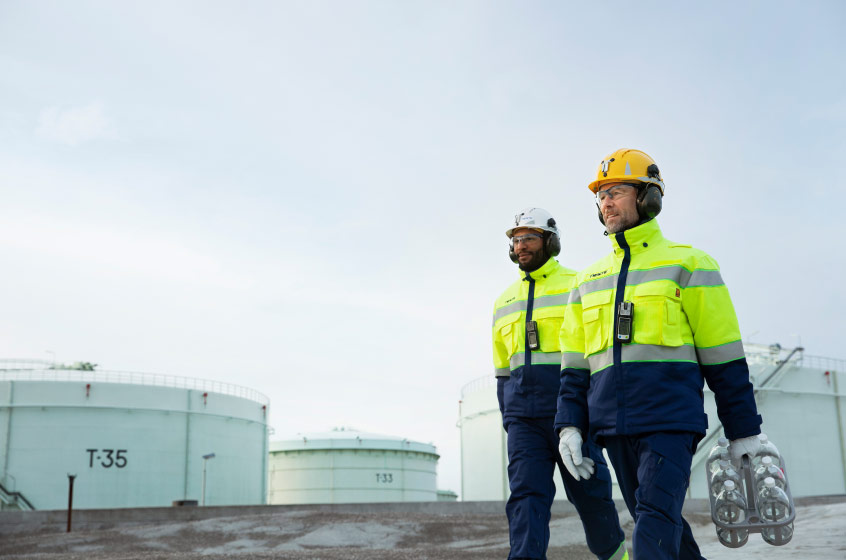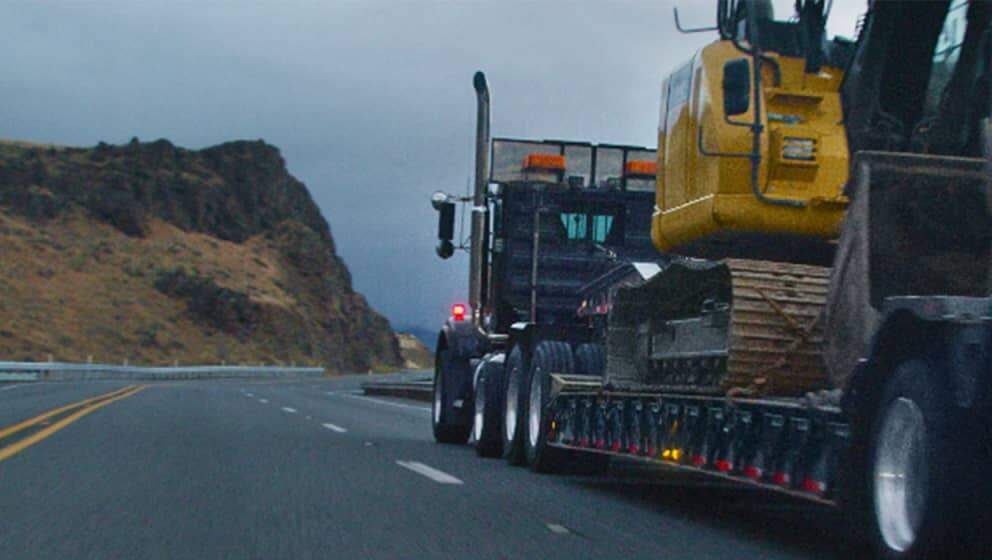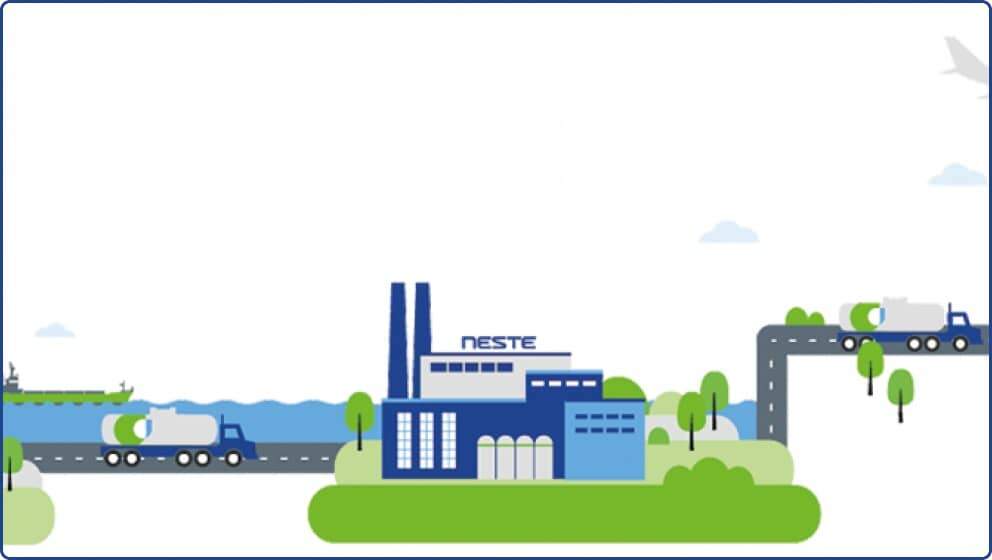How is Neste MY Renewable Diesel™ produced?
How is Neste MY Renewable Diesel produced?
In the 1990s, Neste's research department developed the NEXBTL refining technology for renewable diesel production. With this breakthrough technology, Neste is able to produce high-quality renewable diesel fuel from 100% sustainably-sourced renewable raw materials. A wide variety of waste oils and fats can be used as feedstock, and the resulting renewable diesel fuel meets global standards. During the NEXBTL production, hydrogen is used in the refining process to separate the feedstock molecules and remove oxygen from the fatty acids that make up the fuel’s completely renewable raw material base. The outcome is a renewable diesel with a similar chemical composition to fossil diesel. As a result, Neste MY Renewable Diesel (HVO) is a drop-in diesel that can easily be used in existing diesel-powered engines without modification. If desired, it can also be blended with other diesel fuels. Neste MY is produced at Neste plants in Martinez, CA (USA), Singapore, Rotterdam (The Netherlands) and Porvoo (Finland).
Wondering about the difference between Neste MY and biodiesel? See Renewable diesel vs biodiesel.

The story behind the production of Neste MY Renewable Diesel

What many see as waste, we see as valuable raw materials
At Neste, we are constantly looking to diversify our portfolio with new raw materials. Neste uses a wide variety of globally-sourced renewable raw materials to produce renewable products. The majority of the inputs consist of waste and residues, while a smaller percentage of various vegetable oils can also be used. The top 3 renewable raw material categories used annually are animal fat waste, used cooking oil and different wastes and residues from vegetable oil processing. The proportions of the individual raw materials vary year to year, and from market to market, depending on availability, price, and market-specific requirements.

Purifying raw materials
The waste and residue materials are pre-treated to remove impurities. This creates a clean, and raw material that can be turned into renewable products.

Refining is the last step
To produce diesel molecules, oxygen originating from renewable raw materials needs to be removed with the help of additional hydrogen. Other impurities, like sulfur, are also removed during this process. The hydrocarbons then undergo reforming through isomerization. During this process, the straight-chain hydrocarbon structure is branched, improving its physical properties for use as a fuel.

End result: Neste MY Renewable Diesel™
The end result is a fuel that reduces greenhouse gas (GHG) emissions by up to 75 %* compared to fossil diesel.
Sustainability is in our DNA
Neste only uses sustainably-produced raw materials. Our contracts with suppliers of renewable raw materials include strict terms on this topic.; e.g. commitment to sustainability, protecting biodiversity, and respecting human rights are requirements that must all be met before a contract is signed. Neste’s goal is to make our production carbon neutral by 2035.
All Neste refineries that produce renewable products have International Sustainability & Carbon Certification (ISCC) or are approved by the U.S. Environmental Protection Agency (EPA). In addition, the refineries in Porvoo, Rotterdam and Singapore have ISO 14001 environmental certification.

Locate fuel stations and
distributors
Do you want
to know more?
*Lifecycle greenhouse gas emission reductions compared to fossil diesel and based on current feedstock pathways. Calculation method complies with the LCFS CA-GREET 3.0.
Learn more about Neste MY Renewable Diesel

Questions and answers about Neste MY Renewable Diesel

What is the difference between Neste MY Renewable Diesel and biodiesel?

